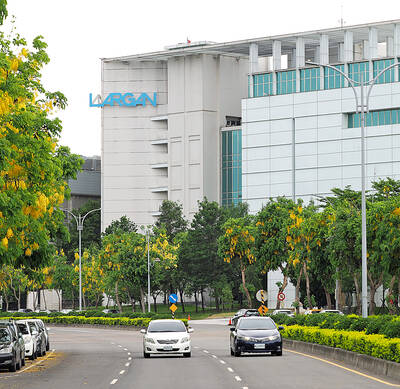The Taiwan Research Institute (TRI, 台灣綜合研究院) yesterday cut its forecast for the nation’s GDP growth this year to 1.55 percent, from the 2.63 percent it predicted in December last year, saying that the COVID-19 pandemic is hurting exports and consumer spending.
The New Taipei City-based think tank said it expects exports and private consumption to contract 3.08 percent and 0.29 percent respectively, despite government efforts to ease the pain from the pandemic and energize domestic demand.
“Taiwan will manage to achieve growth this year, thanks to the government’s efficient control of the virus outbreak, but uncertainty abroad remains high,” TRI president Wu Tsai-yi (吳再益) told an economic forum.
The ongoing worldwide economic downturn induced by lockdowns would hamper growth momentum for domestic and external demand in light of Taiwan’s heavy exposure to global trading activity, Wu said.
Taiwan’s main export destinations — China, the US, Europe, Japan and ASEAN — have all been heavily affected by the pandemic.
Although some local firms have benefitted from demand for remote working and learning, as well as e-commerce, most sectors have felt the pinch, the institute said.
Major economic barometers such as the purchasing managers’ index, exports and employment rates all pointed downward, the TRI report said.
Things would improve in the second half of the year, the high season for technology products, it said.
Consumer activity already started to pick up in May and would gain further traction following the distribution of stimulus vouchers next week, TRI said.
The number of furloughed workers this week dropped 5,990 due to a recovery in dining activity and domestic travel, the Ministry of Labor said.
The TAIEX this month recovered all of its losses and yesterday finished near a 30-year high at 12,192.69 points with turnover of NT$249.311 billion (US$8.43 billion), Taiwan Stock Exchange data showed.
TRI chairman Liu Tai-ying (劉泰英) warned that the stock market is overheating and there is a danger the bubble would burst.
Liu attributed worldwide market rallies to quantitative easing from global central banks to prevent credit crunches and support their economies.
“Individual investors better not take part in the stock fever that may soon be corrected, but they always do,” Liu said.
The TRI said it expects consumer prices to decline 0.23 percent and wholesale prices to shrink 3.97 percent. The local currency would trade at an average of NT$29.860 against the US dollar, it said.

Taiwan’s foreign exchange reserves hit a record high at the end of last month, surpassing the US$600 billion mark for the first time, the central bank said yesterday. Last month, the country’s foreign exchange reserves rose US$5.51 billion from a month earlier to reach US$602.94 billion due to an increase in returns from the central bank’s portfolio management, the movement of other foreign currencies in the portfolio against the US dollar and the bank’s efforts to smooth the volatility of the New Taiwan dollar. Department of Foreign Exchange Director-General Eugene Tsai (蔡炯民)said a rate cut cycle launched by the US Federal Reserve

Handset camera lens maker Largan Precision Co (大立光) on Sunday reported a 6.71 percent year-on-year decline in revenue for the third quarter, despite revenue last month hitting the highest level in 11 months. Third-quarter revenue was NT$17.68 billion (US$581.2 million), compared with NT$18.95 billion a year earlier, the company said in a statement. The figure was in line with Yuanta Securities Investment Consulting Co’s (元大投顧) forecast of NT$17.9 billion, but missed the market consensus estimate of NT$18.97 billion. The third-quarter revenue was a 51.44 percent increase from NT$11.67 billion in the second quarter, as the quarter is usually the peak

Nvidia Corp’s major server production partner Hon Hai Precision Industry Co (鴻海精密) reported 10.99 percent year-on-year growth in quarterly sales, signaling healthy demand for artificial intelligence (AI) infrastructure. Revenue totaled NT$2.06 trillion (US$67.72 billion) in the last quarter, in line with analysts’ projections, a company statement said. On a quarterly basis, revenue was up 14.47 percent. Hon Hai’s businesses cover four primary product segments: cloud and networking, smart consumer electronics, computing, and components and other products. Last quarter, “cloud and networking products delivered strong growth, components and other products demonstrated significant growth, while smart consumer electronics and computing products slightly declined,” compared with the

The US government on Wednesday sanctioned more than two dozen companies in China, Turkey and the United Arab Emirates, including offshoots of a US chip firm, accusing the businesses of providing illicit support to Iran’s military or proxies. The US Department of Commerce included two subsidiaries of US-based chip distributor Arrow Electronics Inc (艾睿電子) on its so-called entity list published on the federal register for facilitating purchases by Iran’s proxies of US tech. Arrow spokesman John Hourigan said that the subsidiaries have been operating in full compliance with US export control regulations and his company is discussing with the US Bureau of